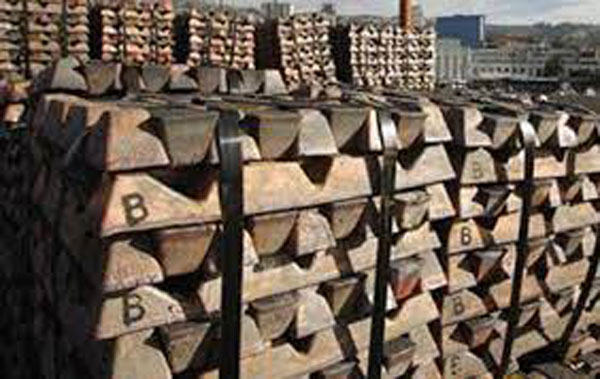Wednesday, 11 November 2015 16:50
 LONDON: Zinc and lead hit mult-year lows on Wednesday while copper veered towards six-year lows after a gauge of China’s factory health showed ongoing weakness in the world’s top metals consumer.
LONDON: Zinc and lead hit mult-year lows on Wednesday while copper veered towards six-year lows after a gauge of China’s factory health showed ongoing weakness in the world’s top metals consumer.
China’s October factory output growth cooled to 5.6 percent, slightly lower than a Reuters poll forecast, though the figure was cushioned by a just-above-forecast 11 percent jump in retail sales.
Global equities shrugged off the data, but metals investors rushed to sell on the view that growth China, which consumes nearly half the world’s copper, is still in low gear and may require further policy support.
“I see some bright spots and some continued softness (in the China data) however there is a definite bearish tone from Chinese and Asian speculators.
Shorting has been concentrated during Asian hours, its not entirely clear why, if anything, the supply side looks a lot shakier,” said Vivienne Lloyd, analyst at Macquarie.
Three month London Metal Exchange zinc fell 1.9 percent to $ 1,577 a tonne at 1056 GMT, having hit a six-year low of $ 1,553.50, while lead dropped 2.2 percent to $ 1,598, having hit a five year low of $ 1,582.
Zinc was the hardest hit even though Belgium’s Nyrstar, the world’s top zinc producer, said on Monday it may cut up to another 400,000 tonnes of zinc concentrate output if prices remain depressed.
Copper dipped 0.3 percent to $ 4,912, having hit $ 4,885 a tonne earlier, its weakest since a six-year low of $ 4,855 in late August.
“The Chinese government and central bank will doubtless have to resort to further stimulus measures in order to shore up the economy.
This prospect should lend support to metal prices,” said Commerzbank in a note.
China stocks closed up on Wednesday as investors wagered on further stimulus after the mixed batch of data.
But suggesting low prices are doing little to entice fresh demand, copper premiums for metal in Shanghai bond edged down by $ 2.50 to $ 87.50, the lowest since mid August.
A trader in Hong Kong, adding that a recent flattening of the Chinese onshore-offshore yuan differential had ended an arbitrage play, taking out a large chunk of metals demand.
“Base consumption has not disappeared, but demand certainly is much weaker now compared to last year.”
Tin was down 0.7 percent at $ 14,625, resisting pressure from news that top exporter Indonesia has given 13 companies tin export permits after they met new export rules introduced this month.





























